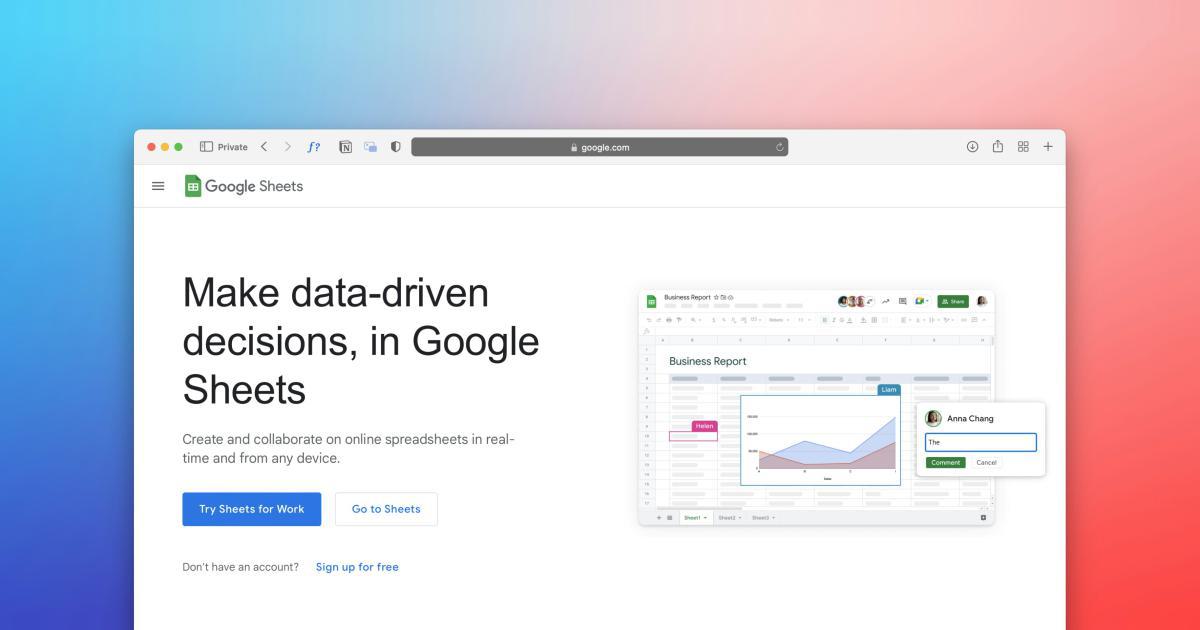How to Streamline UTM Campaign Tracking for Maximum Insights

Understanding the Importance of UTM Campaign Tracking
In the ever-evolving digital landscape, data-driven decision-making has become the cornerstone of effective marketing strategies. One of the most crucial tools in a marketer's arsenal is UTM (Urchin Tracking Module) campaign tracking, which enables you to precisely monitor the performance of your various marketing initiatives.
UTM parameters are snippets of code that you append to the end of a URL, allowing you to track the source, medium, campaign, content, and more. By incorporating these parameters into your marketing links, you can gain a granular understanding of how users are interacting with your content and which campaigns are driving the most valuable traffic to your website.
Proper UTM campaign tracking is essential for several reasons:
Informed Decision-Making: By analyzing the data collected through UTM parameters, you can make informed decisions about which marketing channels, campaigns, and content are resonating with your audience. This enables you to allocate your resources more effectively and optimize your marketing efforts for better ROI.
Multichannel Visibility: UTM tracking allows you to track the performance of your campaigns across various platforms, including social media, email, paid advertising, and more. This holistic view helps you understand the customer journey and identify the most effective touchpoints.
Personalized Targeting: The insights gleaned from UTM campaign tracking can inform your targeted marketing efforts, helping you create more personalized and relevant content for your audience.
Measurement and Reporting: UTM parameters provide the necessary data to measure the success of your campaigns and generate comprehensive reports for stakeholders and decision-makers.
In this comprehensive guide, we'll explore how to streamline your UTM campaign tracking for maximum insights, ensuring that you can leverage this powerful tool to its fullest potential.
Establishing a Solid UTM Tracking Strategy
Before diving into the intricacies of UTM campaign tracking, it's essential to develop a well-thought-out strategy that aligns with your overall marketing objectives. This foundational step will ensure that your UTM implementation is consistent, scalable, and effective.
Define Your Marketing Goals
Begin by clearly defining your marketing goals and key performance indicators (KPIs). Are you primarily focused on increasing website traffic, boosting conversions, or enhancing brand awareness? Understanding your overarching objectives will guide the selection of relevant UTM parameters and help you interpret the data more effectively.

Identify Your Marketing Channels
Next, make a list of all the marketing channels you plan to utilize, such as social media, email, paid ads, organic search, and referral sources. Knowing which channels you'll be tracking will inform the UTM parameters you'll need to monitor each one effectively.
Establish Naming Conventions and Tracking Standards
Consistency is key when it comes to UTM campaign tracking. Develop a clear set of naming conventions and tracking standards that can be easily adopted by your entire marketing team. This will ensure that your data is uniform and easily interpretable.
Consider the following best practices for UTM parameter naming:
- Source (utm_source): Use clear, concise, and recognizable names for your marketing sources (e.g., "facebook," "linkedin," "emailcampaign").
- Medium (utm_medium): Stick to standard marketing terminology like "social," "email," "ppc," "organic," "referral," etc.
- Campaign (utm_campaign): Use descriptive names that clearly identify the campaign (e.g., "summerpromo2023," "blackfridaysale," "newproductlaunch").
- Content (utm_content): This parameter can be used to differentiate between specific elements within a campaign, such as "heroimage," "sidebanner," or "emailcta."
- Term (utm_term): This is typically used for paid search campaigns to track specific keywords.

By establishing these conventions upfront, you'll ensure that your UTM data is consistent, easily segmentable, and provides meaningful insights.
Develop a UTM Tracking Implementation Plan
Create a detailed plan for how you'll implement UTM tracking across your various marketing channels and campaigns. This plan should include:
- A list of all the relevant UTM parameters you'll need to track
- Clear instructions for how to generate and apply UTM-tagged links
- Procedures for regularly auditing and maintaining your UTM tracking
- Processes for communicating UTM best practices to your marketing team
Having a well-documented implementation plan will help ensure a seamless and consistent UTM tracking process across your organization.
Mastering UTM Parameter Creation and Application
With your UTM tracking strategy in place, it's time to dive into the practical aspects of creating and applying UTM-tagged links.
Generating UTM-Tagged Links
There are several methods for generating UTM-tagged links, each with its own advantages and use cases:
Manual Link Building: Manually appending UTM parameters to your URLs is a straightforward approach, particularly for simple campaigns or one-off links. This method allows for maximum customization but can be time-consuming for large-scale marketing efforts.
URL Builder Tools: Utilize online UTM URL builder tools, such as the Google Campaign URL Builder, to generate UTM-tagged links with ease. These tools often provide pre-populated options for common marketing sources and mediums, making the process more efficient.

Automated Solutions: For more complex and high-volume campaigns, consider leveraging UTM automation tools or integrating UTM link generation into your marketing platforms, content management systems, or customer relationship management (CRM) software.
Regardless of the method you choose, ensure that your UTM-tagged links are consistent with your established naming conventions and tracking standards.
Applying UTM-Tagged Links
Once you've generated your UTM-tagged links, it's time to put them to use across your various marketing channels. Here are some best practices for applying UTM tracking:
Social Media: Utilize UTM-tagged links in your social media posts, profile bios, and paid ad campaigns to track the performance of your social media marketing efforts.
Email Campaigns: Incorporate UTM parameters into the links within your email newsletters, promotional messages, and automated email workflows.
Paid Advertising: Ensure that all your paid advertising links, whether on search engines, social media platforms, or display networks, are properly tagged with UTM parameters.
Content and Website: Apply UTM tracking to the links within your website content, blog posts, landing pages, and any other internal or external links.
Offline Channels: Don't forget to incorporate UTM tracking into your offline marketing efforts, such as QR codes, print ads, or event collateral.
By consistently applying UTM-tagged links across all your marketing channels, you'll be able to collect comprehensive data that provides a holistic view of your customer journey.
Optimizing Your UTM Campaign Tracking
With your UTM tracking strategy and implementation processes in place, it's time to focus on optimizing your campaign tracking for maximum insights and data-driven decision-making.
Monitoring and Analyzing UTM Data
Regularly monitor and analyze the data collected through your UTM-tagged links. This will help you identify trends, spot opportunities, and make informed decisions about your marketing efforts.
Key metrics to focus on include:
- Traffic Source and Medium: Understand which channels are driving the most valuable traffic to your website.
- Campaign Performance: Evaluate the effectiveness of your individual marketing campaigns, comparing their performance across different channels.
- Content Engagement: Analyze how users are interacting with your content, such as clicks, conversions, and time on page.
- Multichannel Attribution: Gain insights into the customer journey, identifying the touchpoints that are contributing to conversions.

Leveraging UTM Data for Targeted Marketing
The insights gleaned from your UTM campaign tracking can inform your targeted marketing efforts, helping you create more personalized and relevant content for your audience.
For example, you can use UTM data to:
Segment Your Audience: Divide your audience into distinct segments based on their source, medium, or campaign, and then tailor your messaging and offers accordingly.
Personalize Content and Experiences: Leverage UTM data to serve personalized content, product recommendations, or targeted ads to users based on their previous interactions.
Optimize Campaign Budgets: Identify your most effective marketing channels and campaigns, and adjust your budgets and resource allocation accordingly.
Enhance Remarketing Strategies: Use UTM data to inform your remarketing audience lists and create more targeted retargeting campaigns.
By harnessing the power of UTM data, you can create a more personalized and effective marketing strategy that resonates with your target audience.
Maintaining and Auditing Your UTM Tracking
To ensure the accuracy and reliability of your UTM data, it's essential to maintain and regularly audit your UTM tracking system. This includes:
Regularly Reviewing and Updating Conventions: Revisit your UTM naming conventions and tracking standards periodically to ensure they still align with your evolving marketing strategy and reporting needs.
Conducting UTM Audits: Perform regular audits to identify any inconsistencies, errors, or broken links in your UTM tracking. This will help you maintain data integrity and prevent discrepancies in your reporting.
Automating UTM Tracking Maintenance: Investigate tools or scripts that can automate the process of monitoring and maintaining your UTM tracking, reducing the manual effort required.
Communicating with Your Team: Ensure that your entire marketing team is aware of your UTM tracking best practices and procedures, and provide ongoing training and support to ensure consistent implementation.
By diligently maintaining and auditing your UTM tracking system, you can ensure that your data remains accurate, reliable, and actionable.
Advanced UTM Tracking Techniques
As your marketing efforts become more sophisticated, you may want to explore advanced UTM tracking techniques to unlock even deeper insights and optimization opportunities.
Tracking Offline-to-Online Conversions
Integrate your UTM tracking with other data sources, such as point-of-sale systems or customer relationship management (CRM) software, to track offline-to-online conversions. This can help you understand the full customer journey and attributing offline sales to your digital marketing campaigns.
Implementing Dynamic UTM Parameters
Consider using dynamic UTM parameters that automatically generate unique tracking codes based on specific variables, such as user behavior, device type, or referral source. This can provide more granular insights and enable more personalized marketing experiences.
Integrating UTM Tracking with Analytics Platforms
Seamlessly integrate your UTM tracking data with advanced analytics platforms, such as Google Analytics or Adobe Analytics. This will allow you to leverage the powerful segmentation, reporting, and attribution features of these tools to gain even deeper insights into your marketing performance.

Utilizing UTM Tracking for Multichannel Attribution
Leverage your UTM data to implement a comprehensive multichannel attribution model, which can help you understand the relative contribution of each marketing touchpoint to your overall conversions and revenue. This can inform your budget allocation and optimization strategies.
By exploring these advanced UTM tracking techniques, you can unlock a wealth of data-driven insights to drive your marketing strategy forward and achieve even greater success.
Conclusion
UTM campaign tracking is a powerful tool that can provide unparalleled visibility into the performance and impact of your marketing efforts. By establishing a solid UTM tracking strategy, mastering the creation and application of UTM-tagged links, and optimizing your data analysis and usage, you can unlock a treasure trove of insights to drive more informed, effective, and personalized marketing decisions.
Remember, the key to successful UTM campaign tracking lies in consistency, attention to detail, and a commitment to continuous improvement. By embracing these principles, you'll be well on your way to streamlining your UTM tracking and maximizing the impact of your marketing campaigns.